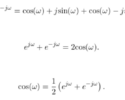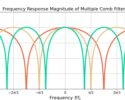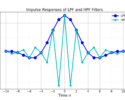Table of Contents
Introduction
Much is said in an undergraduate education about how to design filters but not how to apply them. I never felt as if I got a great answer to the question: “why are filters used in DSP?”, so in this blog post I’ll answer that question with the four ways I have found them to be applied:
- Destroy: Remove elements from a signal
- Modify: Apply a desired effect to a signal
- Isolate: Separate signals from one another
- Combine: Combine multiple signals together
More blogs on DSP:
Destroy
The most common application of a filter in DSP is to destroy noise and interference. Every single RF signal is going to contain some element of noise which corrupts and degrades the quality of the desired signal. Filters are used to destroy, or minimize, the amount of noise in order to improve the signal to noise ratio (SNR).
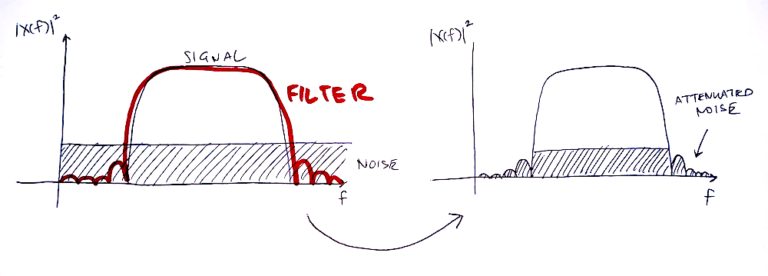
The second way filters are used to destroy is by rejecting interference. Consider the FM radio in your vehicle: there may be ten radio stations in your town but you only want to list to the station at 100.3 MHz. The signal at 100.3 MHz is your desired signal and all of the other FM stations are undesired and therefore interference. A filter is used to minimize the impact of the interference from other FM stations to improve the signal to noise and interference ratio (SINR).
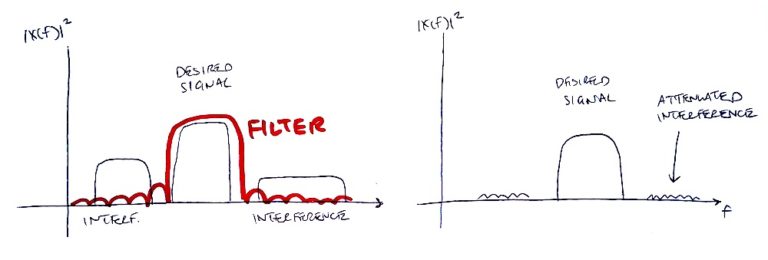
Modify
Filters are designed and used to apply effects to a signal. An audio example of this would be using a foot pedal to apply a distortion effect to a guitar.
A pulse shaping filter is used in a RF transmitter to apply a desired spectral shape to a transmitted signal in order to minimize the power in the sidelobes. A receiver may apply an equalizer in order to undo multipath distortion on a received signal or automatic gain control (AGC) to keep the signal at a consistent amplitude level.

Isolate
Being able to isolate signals, or channelize them, is another way filtering is applied to a receive signal. You can think of channelization as a stained glass window: the full light spectrum is received by all of the panes which isolate each of the different colors.

Consider the case in which a cellular basestation has to receive and process 10 different cellular handsets on different frequencies. Each handset needs to be isolated from one another through filtering before it can be demodulated and processed.
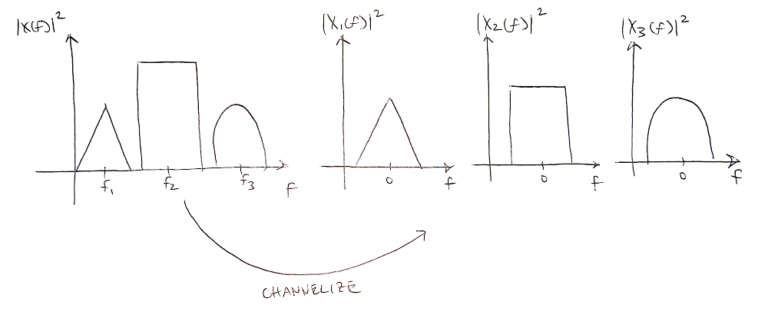
Combine
Combining multiple signals into one is the least common and typically occurs in transmitters. An example of synthesis would be a TV station broadcasting multiple signals across different frequencies with a single transmitter and antenna. Since there is only one output and multiple signal inputs they all must be synthesized together.
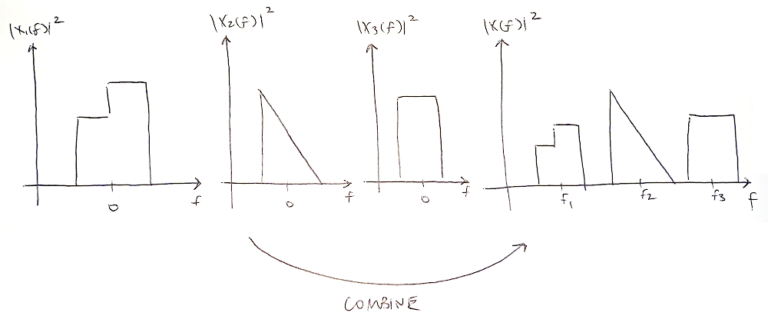
Conclusion
There are four main ways filters are used in DSP: to destroy, modify, isolate and combine. Filters are used to apply effects to either a transmitted signal or a receive signal. The most common filter application is to destroy, or minimize, noise and interference.
Marc over at PySDR has a great chapter on filters that is totally worth checking out!
More blogs on DSP:
